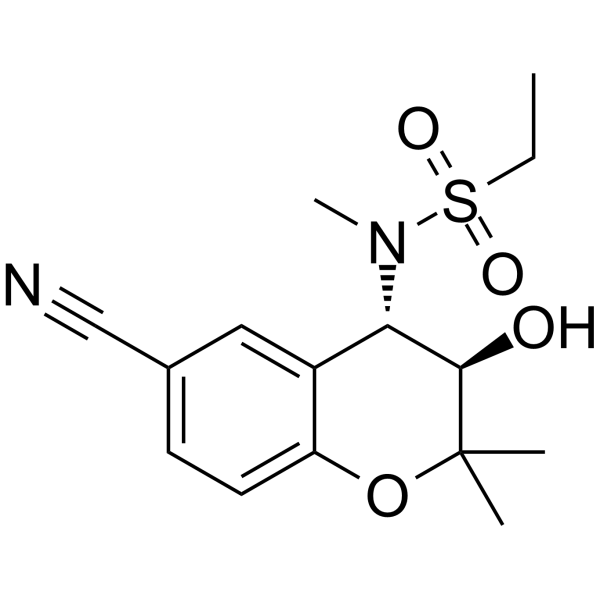Effects of potassium channel blockers on changes in refractoriness of atrial cardiomyocytes induced by stretch.
Jie Qi, Junjie Xiao, Yangyang Zhang, Jun Li, Ying Liu, Pengjuan Li, Lei Liang, Bing Jiang, Wei Wen, Cuimei Zhao, Dandan Liang, Yi Liu, Yi-Han Chen
Index: Exp. Biol. Med. (Maywood.) 234(7) , 779-84, (2009)
Full Text: HTML
Abstract
Shortening of the effective refractory period (ERP) is regarded as one of the key mechanisms of atrial fibrillation (AF). Stretch is an important predisposing factor in the pathogenesis of AF. However, effective methods to counteract alteration of ERP induced by stretch still need to be explored. Although potassium channels play important roles in cardiac repolarization and refractoriness, the effects of potassium channel blockers on the alteration of repolarization and refractoriness induced by stretch are still unknown. Action potential duration (APD) and ERP were recorded using the standard intracellular microelectrode technique in the left atrial appendage cardiomyocytes of guinea pigs. Stretch accelerated repolarization of atrial cardiomyocytes and also shortened the ERP (P < 0.05). Dofetilide, a rapid delayed rectifying potassium ion channel (I(Kr)) blocker; 4-AP, a transient outward potassium ion channel (I(to)) blocker; and BaCl(2), an inward rectifying potassium ion channel (I(K1)) blocker could counteract the shortening of APD and ERP (P < 0.01). Glibenclamide, an ATP-sensitive potassium ion channel (I(KATP)) blocker; 293-B, a slow delayed rectifying potassium channel (I(Ks)) blocker; and DPO-1, an ultra-rapid delayed rectifying potassium ion channel (I(Kur)) blocker all had no effect on APD and ERP (P > 0.05). Stretch could accelerate repolarization of atrial cardiomyocytes and shorten their ERP, and the I(to), I(Kr), and I(K1) blockers could counteract the effects of stretch.
Related Compounds
| Structure | Name/CAS No. | Molecular Formula | Articles |
|---|---|---|---|
 |
Chromanol 293B
CAS:163163-23-3 |
C15H20N2O4S |
|
Genetic Inhibition Of The Ubiquitin Ligase Rnf5 Attenuates P...
2015-01-01 [Sci. Rep. 5 , 12138, (2015)] |
|
Drosophila KCNQ channel displays evolutionarily conserved el...
2011-01-01 [PLoS ONE 6(9) , e23898, (2011)] |
|
Effects of KCNQ channel modulators on the M-type potassium c...
2012-03-01 [Am. J. Physiol. Cell Physiol. 302(5) , C821-33, (2012)] |
|
A Simple Protocol for the Myocardial Differentiation of Huma...
2015-01-01 [Biol. Pharm. Bull. 38 , 1070-5, (2015)] |
|
Nobiletin Stimulates Chloride Secretion in Human Bronchial E...
2015-01-01 [Cell Physiol. Biochem. 37 , 306-20, (2015)] |